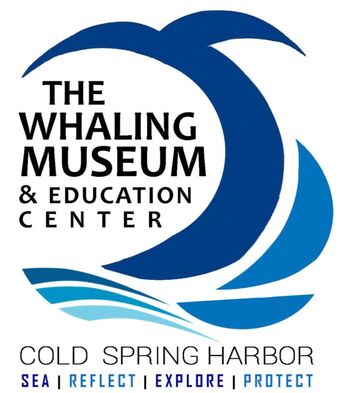Mission
|
The Whaling Museum brings communities together to cultivate knowledge & celebrate creativity through the arts, science, and history of our whaling heritage: Long Island's biggest story.
|
The Whaling Museum is the only museum in the world open year-round which explores the whaling history of the Long Island region.
|
Museum History
|
The story of the museum's founding can be accessed here.
The museum's collection and education programs provide the community with a significant link to the understanding of one of Long Island’s earliest major industries - whaling. The collection was formed by the local community who recognized the need for a repository to preserve the region’s local maritime history and Cold Spring Harbor’s whaling past. Long Island boasts a particularly vibrant whaling heritage. Historically, whaling was one of Long Island’s most important commercial industries, significantly shaping the economic development and social foundation of the region, as well as contributing to America’s emergence as an international power in the 19th century. One of the three whaling ports on Long Island, Cold Spring Harbor, a village located on the North Shore of Suffolk County, offers a microcosmic view of the quintessential 19th century American whaling town. To honor the town’s heritage, the Whaling Museum Society, Inc. was founded in 1936. Having grown in size, focus, and reach since then, today the museum is locally well-known for its creative, innovative, and out-of-the-box approaches to the story of whaling, particularly through its extensive educational initiatives offered throughout the year. The Museum remains an important regional symbol of the industry that had a deep impact on our local and national culture. The Museum’s object and archival holdings of 6,000 artifacts document the whaling and general maritime history of Cold Spring Harbor, Long Island, and general US whaling history. The star of the Museum’s permanent exhibits is a historic whaleboat, the only fully-equipped whaling vessel with its original gear on display in New York. Highlights of the collection include one of the notable scrimshaw collections in the northeast. Additional objects include whaling implements, ship’s gear, navigational aids, ship models and maritime art. The library and archival collection contains 2,800 primary and secondary volumes and manuscript material from the Cold Spring whaling fleet, ship’s logs, journals and business correspondence of the Cold Spring Whaling Company, family documents dealing with maritime commerce on Long Island, records of the Long Island coastwise trade under sail and records from the Cold Spring Harbor Customs House (1798-1908). Through a combination of permanent and changing exhibitions, special events and educational programs, the Museum uses its resources to the fullest to provide services to the public. The Museum provides innovative Museum education programs on Long Island, including school programs for 12,000 students annually, birthday parties, scout programs and overnights, family events, senior days, and camp programs - not to mention our extensive outreach program which reaches 4,100 children and teens each year. |
The first whaling companies in the continent were born on Long Island shores.
25,000 Long Islanders Reached
6,000 Artifacts 1 Whaleboat When a Whale Came to Huntington
The museum was a collaborator in recognizing the anniversary of this unusual 1946 event.
|



